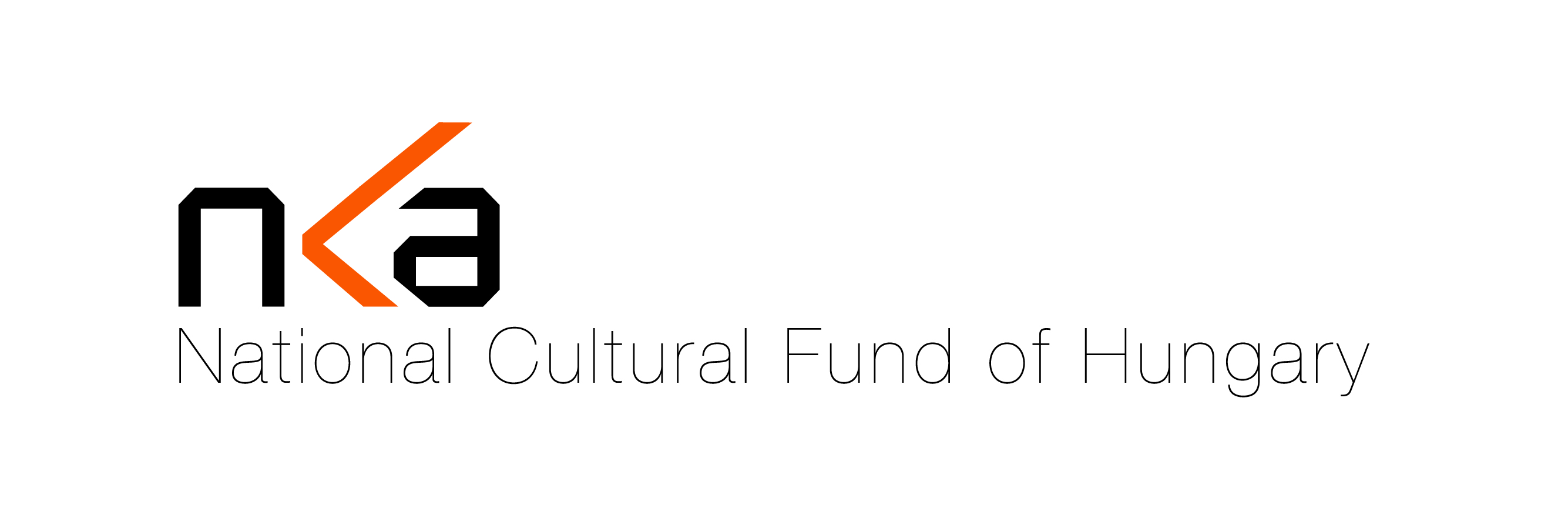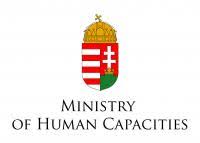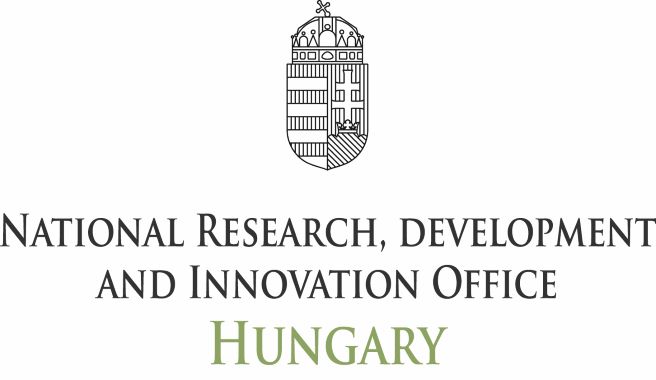Kodály about Composition
”When did I first start to occupy myself with music? I remember this time very well. At the age of three.” (On the Fiftieth Birthday – Statement 1932) Az ötvenedik születésnapon – Nyilatkozat 1932) (Translation by the author of the publication)
”I begged my mother to give me one of her cooking utensils: it was a wooden multi-hole drainer spoon; I pulled strings through its holes, and fixed them as strings of a musical instrument to the end of the spoon. It became some sort of guitar, and on that I accompanied my singing. I hid with it in a quiet place, and sang for hours, always accompanying my wordless, improvized melodies on this instrument. I admit that later even my best works did not fill me with such satisfaction, such joy, as these first improvisations, which were my first compositions.” (Reminiscences 1963) (Emlékek 1963) (Translation by the author of the publication)
”My first musical experiences were of a vocal nature.” (Reminiscences 1963) (Emlékek 1963) (Translation by the author of the publication)
”When I write for orchestra I regard the instruments as voices. And that is very different from the so-called ‘avant-garde’ or electronic music which is not similar to any human cadence (intonation).” (Kodály’s original English) (Questions and Answers – Congregation of the Arts, Dartmouth College, Hanover, New Hampshire 1965 – Zoltán Kodály: Writings on Music Education 2019, published by Liszt Academy) (Kérdések kereszttüzében – Közönségtalálkozó a Dartmouth College-ban 1965)
”As composers, our job was to somehow reconcile these completely different ’old melodies’ with Western music and create an organic relationship between them." (Self- Portrait 1965) (Önarckép 1965) (Translation by the author of the publication)
”all my great experiences, the events of my life, everything that would be worth talking about, has been absorbed into my music. I wouldn’t even be able to evoke them with words anymore.” (On the Fiftieth Birthday – Statement 1932) (Az ötvenedik születésnapon – Nyilatkozat 1932) (Translation by the author of the publication)
”(Toscanini) very often asked me to write things (compose) for him” (Kodály’s original English) (Questions and Answers – Congregation of the Arts, Dartmouth College, Hanover, New Hampshire 1965 – Zoltán Kodály: Writings on Music Education 2019, published by Liszt Academy) (Kérdések kereszttüzében – Közönségtalálkozó a Dartmouth College-ban 1965)
(Toscanini) ”wanted nothing else than to make the author speak, and everything that he searched was to avoid anything that did not fit that. So that we felt when he played Beethoven we heard Beethoven playing himself, or even Wagner. This fits also the general meaning that every style of music can be best interpreted by a native of the same country. Now he proved that every country was accessible for him. An Italian did a better Wagner than the Germans did, and a better Beethoven than Austrians did, and so on. And I can add, a better Hungarian than Hungarians did.” (Kodály’s original English) (Radio Interview by Don Gillis with Zoltán Kodály and Walter Toscanini for NBC, New York 1965) (Toscanini emlékezete – Rádióbeszélgetés New Yorkban 1965)
”The audience [...] must be awakened to the self-awareness of their own musical language, otherwise they will not even understand what is said to them in this language. ’Háry János’ and ’Spinning Room’ (Székelyfonó) have undertaken this work. The voice of the people in its original form had to be taken into this ornate building (the Opera House).” (Around the Opera House 1946) (Az Opera körül 1946) (Translation by the author of the publication)
”In the past season, my textless choral work entitled Mountain Nights (’Hegyi éjszakák’) was first performed. [...] In a certain polyphonic style [...] I find text superfluous, since it wouldn’t be understood anyway. In addition, without having a real purpose, it forces a given declamation and rhythmical details upon the composer.” (My Plans for Composition – Statement 1925) (Zeneszerzői terveim – Nyilatkozat 1925) (Translation by the author of the publication)
”[...]my extensive pedagogical work [...] accounts for an important part of my life’s work.” (My Path to Music – Five Conversations with Lutz Besch 1964-1966, translated from the original German by Jerry-Louis Jaccard) (Utam a zenéhez – Öt beszélgetés Lutz Besch-sel 1964-1966)
”According to evidence of music history, light music owes its popularity to the fact that it builds upon the serious music of the previous era, but sometimes composers of serious music can also learn something from composers of light music. This recognition is most widespread in America, where they don’t reproach one another saying that ’you write only fugues, and you write only light music’: They learned to appreciate each other for their merits.” (About Light Music – Remarks 1948) (A könnyűzenéről – Felszólalás 1948) (Translation by the author of the publication)
Kodály about the Teaching of Composition
”I spare no efforts to get my students to learn, as well as is possible, the polyphonic style, ’the Sanskrit of music’ – as it is termed by an eminent English writer – [...] ’containing all that is imperishable from the past and which will become a means of expression for all great concepts of the future’, enabling them to penetrate into the holy books of music as profoundly as possible. In this respect I go further than has been usual here until now; and is, in fact, not customary elsewhere either.” (Thirteen Young Composers 1925 – Zoltán Kodály: Selected Writings, Corvina Press 1974) (Tizenhárom fiatal zeneszerző 1925)
”I do not overburden the students of composition with folk music, particularly not while they are beginners. I do not want to ’breed’ artificially ’national composers’.” (Thirteen Young Composers 1925 – Zoltán Kodály: Selected Writings, Corvina Press 1974) (Tizenhárom fiatal zeneszerző 1925)
”One should start from the individual, inherited inclinations. Because even a lesser talent has an explicit individuality and can develop only in the direction of their own internal currents. This is where I have perhaps made the least miskates.” (Thirteen Young Composers 1925) (Tizenhárom fiatal zeneszerző 1925) (Translation by the author of the publication)
Kodály about Folk Music Research
”I saw already, at the time that I wrote my dissertation on the folk song, how unsatisfactory all of the published collections were. So I decided to go myself to the location of the source to study the folk songs. [...] A selection of my first collections, published in ’Ethnographia’ (a professional journal entitled ’Ethnography’), attracted Bartók's attention. From then on, we worked together. [...] it was my conviction from the beginning that this was the only solid foundation of creating a Hungarian style. This same conviction also attracted Bartók to his research; [...] And so we worked in parallel, sharing our discoveries which revealed completely unknown areas to us. In composing each of us responded to this according to our personalities. The essential point was to adhere to the old traditions, and further develop them in such a way, as one’s personality, every one’s individuality may allow. Bartók’s interest – as it is known – drew him towards the folk music of various peoples and countries. He always sought something new and something different, and reached far; while I, staying in one place, was rather inclined to dig down and shed light on the geological layers of our own song.” (Reminiscences 1963) (Emlékek 1963) (Translation by the author of the publication)
”We divided the country between us. He went straight to Transylvania, I myself to Upper Hungary (Felvidék).” (Self-Portrait 1965) (Önarckép 1965) (Translation by the author of the publication)
”1906: We recognize the fundamental layer of our folk music, the rock upon which a culture can be built.” (A Hundred-Year Plan 1947 – Zoltán Kodály: Selected Writings, Corvina Press 1974) (Százéves terv 1947)
”By the second year we clearly saw that pentatony is the essence of our ancient songs.” (Self-Portrait 1965) (Önarckép 1965) (Translation by the author of the publication)
”We wanted to incorporate the spirit and atmosphere of the Hungarian folk song into the symphonic music. We wanted to realize the process which had already taken place in various national schools in Europe.” (Folk Song, Art Song, School Song – Radio Interview 1958) (Népdal, műdal, iskolai dal – Nyilatkozat 1958) (Translation by the author of the publication)
”[...]we had to achieve this study and collection in a very short time. I would have possibly composed more if I had not taken on this work, but then I would not have known how to write all of my compositions as they are, for they are, after all, unintentionally or intentionally in the Hungarian folk tradition.” (My Path to Music – Five Conversations with Lutz Besch 1964-1966, translated from the original German by Jerry-Louis Jaccard) (Utam a zenéhez – Öt beszélgetés Lutz Besch-sel 1964-1966)
”Folk music means something else, immeasurably more to us, than does their own folk music to a German, French or Italian musician. In these countries, the essence of folk music has already been largely absorbed by art music. The spirit of these peoples already lives in their art music. However, the spirit of the Hungarian people lives almost exclusively in its folk music, as Hungarian art music is still in its beinning stages.” (Thirteen Young Composers 1925) (Tizenhárom fiatal zeneszerző 1925) (Translation by the author of the publication)
”[...]a German musician can find in Bach or Beethoven that which we can seek as yet only in our villages: the organic life of a national tradition.” (Kodály’s original English) (The Tasks of Musicology in Hungary, Studia Musicologica Academiae Scientiarum Hungaricae, Akadémiai Kiadó 1961) (A zenetudomány feladatai Magyarországon 1961)
”In those countries with old cultural traditions, the substantial essence of folk music transcended into the great works of higher art a long time ago. [...] Bach represents such a condensation of German folk music which no other nation possesses. A German music student who has internalized Bach, perhaps doesn’t need to be so concerned with folk songs.” (Hungarian Music 1925) (Magyar zene 1925) (Translation by the author of the publication)
”And without even mentioning the tight connecting threads between chorale and folksong, Bach had already taken on a great abundance of folksongs as a family inheritance from his forefathers. The chorales that make up the foundation of a great portion of his compositions are folksongs, as it were.” (My Path to Music – Five Conversations with Lutz Besch 1964-1966, translated from the original German by Jerry-Louis Jaccard) (Utam a zenéhez – Öt beszélgetés Lutz Besch-sel 1964-1966)
”Here this is not the case. Our only tradition is folk music. [...] In European states, great art arose in the ruling courts or in rich bourgeois communities. In Hungary, the foreign (Habsburg) dynasty never promoted the issue of national culture. [...] ultimately, the ancient national treasure of musical tradition was limited to peasantry alone.” (Hungarian Music 1925) (Magyar zene 1925) (Translation by the author of the publication)
”This process was left out from the development of Hungarian music.” (Folk Song and Audience 1932) (Népdal és közönség 1932) (Translation by the author of the publication)
”Rich written and printed melody collections dating back to the 13th century have survived in the Western nations. Here this also has to be made up for by folk tradition.” (The Fire Must Not Be Extinguished 1925) (A tűznek nem szabad kialudni 1925) (Translation by the author of the publication)
”Starting from their folk songs, the Slavonic and Scandinavian peoples set about the creation of a national musical style. [...] Russian music set out on this road with Glinka.” (The Role of Folk Song in Russian and Hungarian Music – Lecture 1946 – Zoltán Kodály: Selected Writings, Corvina Press 1974) (A népdal szerepe az orosz és magyar zeneművészetben – Előadás 1946)
”The Five: Rimsky-Korsakov and his companions, headed by Mussorgsky, [...] not only studied the tradition, but [...] based on it, they created a completely new and original art. [...] This task, to accomplish the same in our region as they did in their own, has been left for our generation, namely creating a higher national musical style delving into and leaning upon the foundation of folk song. [...] we were familiar with their great folk song collections, and these encouraged us to create similar ones.” (Opening Speech at the Soviet Book and Music Exhibition of Music Pedagogy and Music Literature 1953) (Megnyitó beszéd a szovjet zenepedagógiai és zeneirodalmi könyv- és kottakiállításon 1953) (Translation by the author of the publication)
”[...]we do know that Brahms collected folksongs on his hikes along the Rhine. Robert Schumann [...] in his ’House Rules and Rules for Life’ [...] emphasized: ’Listen diligently to all folksongs, which indicate the character of various peoples and contain a lot of the most beautiful melodies.’” (My Path to Music – Five Conversations with Lutz Besch 1964-1966, translated from the original German by Jerry-Louis Jaccard) (Utam a zenéhez – Öt beszélgetés Lutz Besch-sel 1964-1966)
”Vaughan Williams [...] ennobled the folk song with his marvelous settings, he ennobled his own style with the spirit of folk song. Thus he renewed English music by returning to old tradition.” (Kodály’s original English) (For Vaughan William’s Death 1958 – International Folk Music Journal) (Vaughan Williams halálára 1958)




